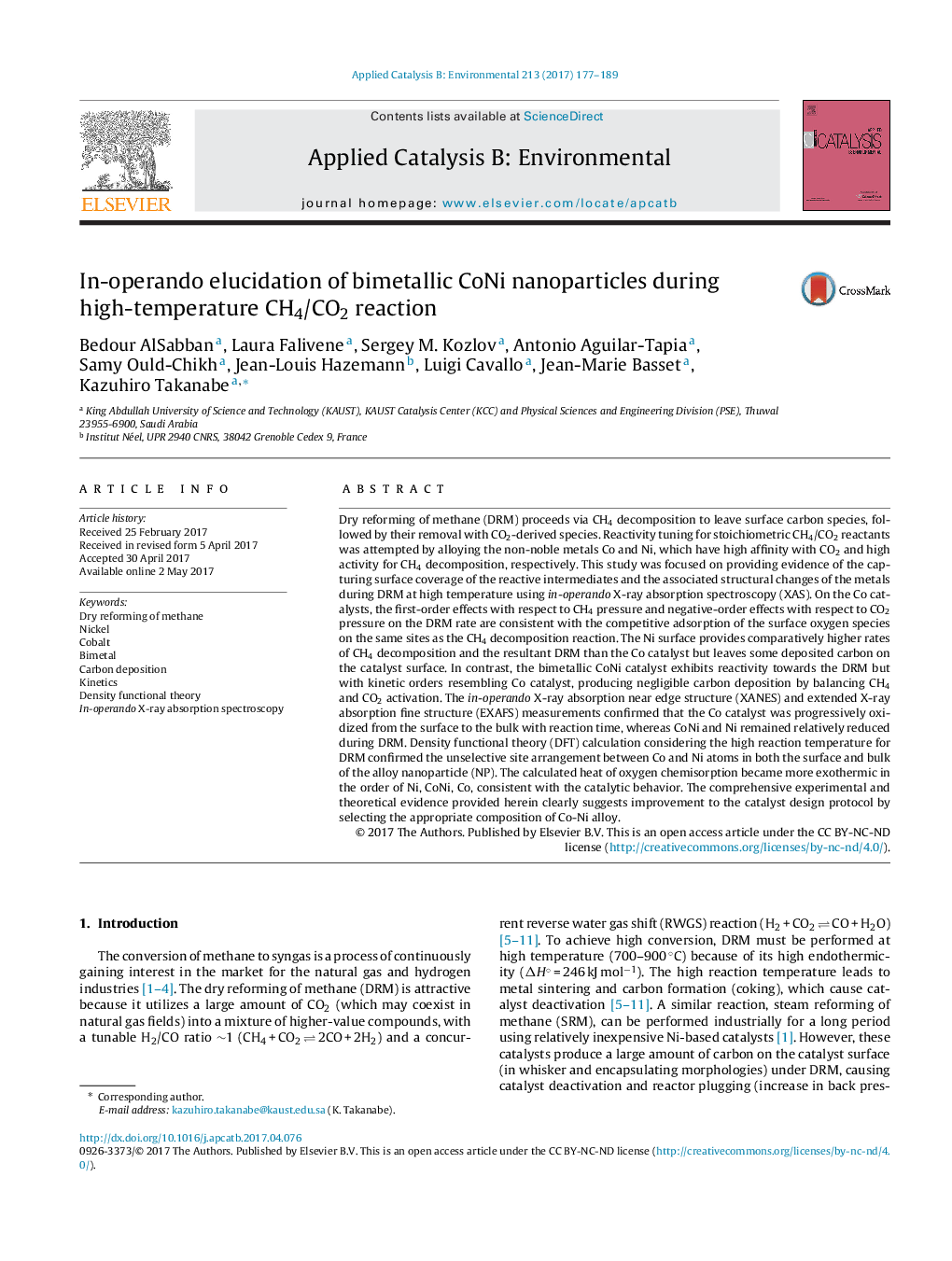| کد مقاله | کد نشریه | سال انتشار | مقاله انگلیسی | نسخه تمام متن |
|---|---|---|---|---|
| 6453895 | 1418807 | 2017 | 13 صفحه PDF | دانلود رایگان |

- The oxidation states of the CoNi bimetals were monitored during DRM using in-operando X-ray absorption spectroscopy.
- While progressive oxidation of monometallic Co catalyst occurred during DRM, CoNi and Ni catalysts were largely maintained reduced.
- DFT calculation revealed that the Co and Ni atoms in alloy nanoparticles are randomly distributed at high temperature.
- DFT calculation showed that heat of oxygen adsorption uniquely increases monotonically with increasing Co content in CoNi alloy.
- The CoNi alloy for DRM can balance CH4 and CO2 activation kinetically, preventing both carbon deposition and metal oxidation.
Dry reforming of methane (DRM) proceeds via CH4 decomposition to leave surface carbon species, followed by their removal with CO2-derived species. Reactivity tuning for stoichiometric CH4/CO2 reactants was attempted by alloying the non-noble metals Co and Ni, which have high affinity with CO2 and high activity for CH4 decomposition, respectively. This study was focused on providing evidence of the capturing surface coverage of the reactive intermediates and the associated structural changes of the metals during DRM at high temperature using in-operando X-ray absorption spectroscopy (XAS). On the Co catalysts, the first-order effects with respect to CH4 pressure and negative-order effects with respect to CO2 pressure on the DRM rate are consistent with the competitive adsorption of the surface oxygen species on the same sites as the CH4 decomposition reaction. The Ni surface provides comparatively higher rates of CH4 decomposition and the resultant DRM than the Co catalyst but leaves some deposited carbon on the catalyst surface. In contrast, the bimetallic CoNi catalyst exhibits reactivity towards the DRM but with kinetic orders resembling Co catalyst, producing negligible carbon deposition by balancing CH4 and CO2 activation. The in-operando X-ray absorption near edge structure (XANES) and extended X-ray absorption fine structure (EXAFS) measurements confirmed that the Co catalyst was progressively oxidized from the surface to the bulk with reaction time, whereas CoNi and Ni remained relatively reduced during DRM. Density functional theory (DFT) calculation considering the high reaction temperature for DRM confirmed the unselective site arrangement between Co and Ni atoms in both the surface and bulk of the alloy nanoparticle (NP). The calculated heat of oxygen chemisorption became more exothermic in the order of Ni, CoNi, Co, consistent with the catalytic behavior. The comprehensive experimental and theoretical evidence provided herein clearly suggests improvement to the catalyst design protocol by selecting the appropriate composition of Co-Ni alloy.
119
Journal: Applied Catalysis B: Environmental - Volume 213, 15 September 2017, Pages 177-189